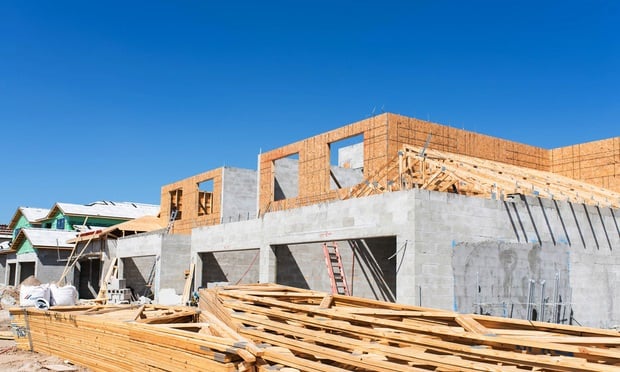Elizabeth Berger, president of the Alliance for Downtown New York, says that "while there is still much work to be done developing the World Trade Center site, the bigger story is how Lower Manhattan has emerged as one of the most dynamic and successful live/work communities in the world." Berger points to the pricing of office space leasing as one particular attraction, as well as housing options, public transportation, schools, restaurants and more. She says the area is now the place where people want to be, and it is just the beginning.
Although both Mayor Michael Bloomberg and Gov. David Paterson have shared a sense of disappointment and frustration at the pace of the Ground Zero rebuilding, which has yet to come up with a "realistic timeline or budget," according to Gov. Paterson, there has been progress in other areas of Lower Manhattan. Gov. Paterson expects a comprehensive review of the process and issues necessary to bring certainty and progress to Ground Zero, including the abatement and deconstruction of 130 Liberty St. from the Port Authority later this month.
According to Cushman & Wakefield Inc., Lower Manhattan's employment and commercial real estate sectors "have defied expectations and performed remarkably well despite being hit hard by a years-long post-9/11 economic slump." The destruction of the WTC alone accounted for the loss of more than 50,000 jobs and millions of sf of office space, and "subsequent employee reductions and relocations resulted in a 14.5% decrease in pre-9/11 employment figures and a 6% decrease in the number of companies located in Lower Manhattan." In addition, rents fell by 14.8% from $41.77 to $35.60 and the vacancy rate more than doubled to 15.3%.
According to the Alliance for Downtown New York, the opening of 7 World Trade Center in 2006 sparked a turnaround in the market. Also fueling the commercial real estate market's recovery were large leases by major tenants ranging from firms such as Omnicom to firms such as Moody's and Morgan Stanley, and nonprofits such as UNICEF. "Goldman Sachs' decision to build its new world headquarters directly across from the World Trade Center site was another key event in the revival of the area," explains the Alliance.
Hugh Finnegan, an attorney in the real estate group at Sullivan & Worcester LLP, tells GlobeSt.com that "Lower Manhattan has slowed down because of factors beyond its control," pointing to the sub-prime crisis, the credit crunch, the general state of the economy. "The result is that the recovery will take place, it will just take longer than hoped for," he explains.
Finnegan says that the area there was beginning to transform into a more residential area pre-9/11, which, mixed with the office sector, brought "a greater energy and vitality to the area, which was good." However, he did note that the residential market has cooled a bit and the metamorphosis has slowed. "The continuation of the transition is inevitable and it will resume when the pendulum swings back in the other direction," he says. "Improvements are needed…The extension of the LIRR from Brooklyn would help."
According to the Alliance for Downtown New York, since 9/11, more than 12,000 housing units have been built since 2001, bringing Lower Manhattan's population to 56,354 by year-end 2008, more than double the pre-9/11 population. The surge in tourism in the area, is also spurring the development of new hotels in the area, including the W and the Four Seasons, which will add 3,152 rooms by 2011. Daniel Lesser, senior managing director of CB Richard Ellis' Valuation & Advisory Services and Hospitality and Gaming Group, recently told GlobeSt.com that that Downtown area continues to undergo major change and development with significant office, residential, tourist and transportation projects expected to be completed over the next five years. "The area is increasingly evolving into a 24/7 full service neighborhood with the addition of high-end high-rise residential apartments and condominiums as well as restaurants, retail and entertainment venues," he explains. "Diverse groups of office tenants have been migrating to lower Manhattan to take advantage of lower rents when compared to Midtown. Hotels are experiencing strong occupancy levels and increases in room rates that exceed underlying inflation rates."
Nick Petkoff, director of sales in the Financial District and Tribeca at Massey Knakal Realty Services, says that Downtown is "well-positioned to weather the storm." He adds that "while the economy has recently slowed and Wall Street seems more somber, downtown still holds its own with other areas of Manhattan," noting that analysts mostly fear that developers or converters "will not be able to finance their projects and that an increase in the vacancy rate of office buildings will put downward pressure on rents, which may lead to foreclosures. The Wall Street slowdown may also put pressure on retail purchases and thus, on retail rents." However, he says that while the arguments have some validity, he does not expect the slowdown to lead to a major unraveling of the building sales markets or rental prices in the next 12 months. "The promise and excitement of downtown is well and alive, we just need to dance a cautious dance for the time being."
Want to continue reading?
Become a Free ALM Digital Reader.
Once you are an ALM Digital Member, you’ll receive:
- Breaking commercial real estate news and analysis, on-site and via our newsletters and custom alerts
- Educational webcasts, white papers, and ebooks from industry thought leaders
- Critical coverage of the property casualty insurance and financial advisory markets on our other ALM sites, PropertyCasualty360 and ThinkAdvisor
Already have an account? Sign In Now
*May exclude premium content© 2024 ALM Global, LLC, All Rights Reserved. Request academic re-use from www.copyright.com. All other uses, submit a request to [email protected]. For more information visit Asset & Logo Licensing.








